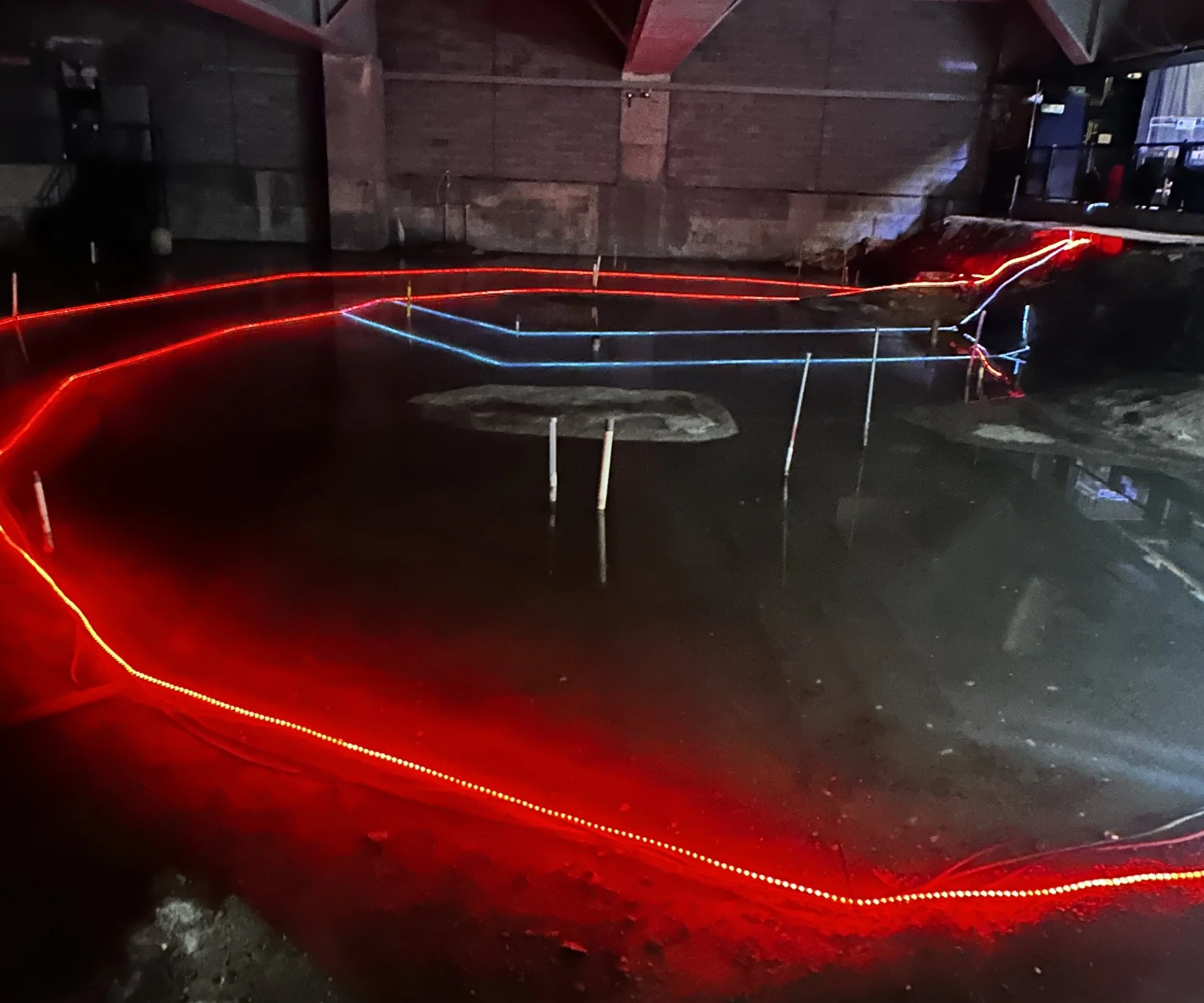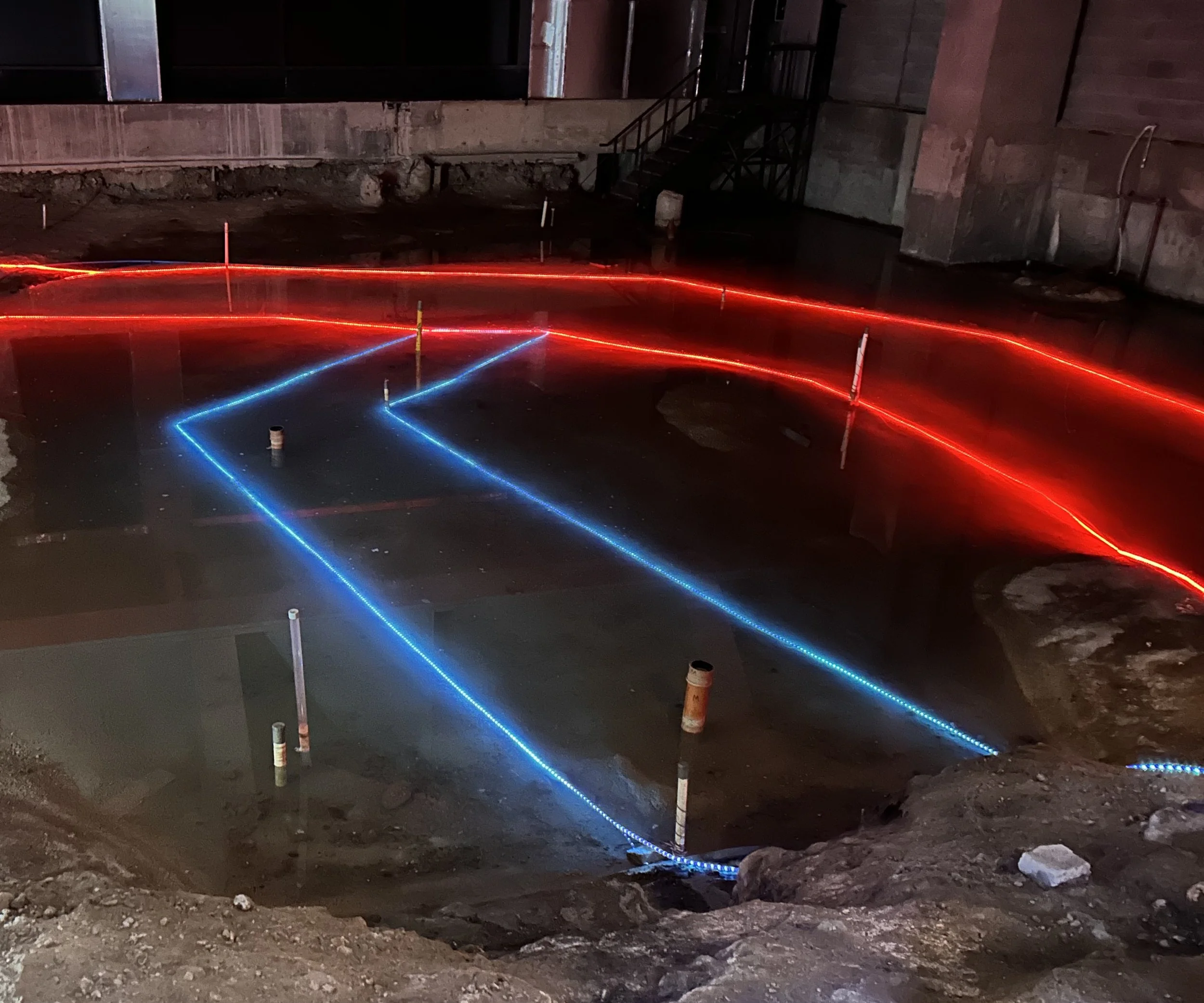Preservation
The Rose Playhouse holds a very special place in the history of archaeological science.
It is one of the key sites where the science of archaeological preservation on site was born and developed, paving the way for many important sites to be preserved around the world.
To learn more, and about The Rose’s current status, read on…
Following its discovery and excavation in 1989, the archaeological team realised it was not enough simply to cover the site back over.
The remains of the Rose contain both organic and inorganic elements such as wood and chalk, and the site needs to be kept wet to preserve these organic elements, which are the more difficult to successfully preserve.
A carefully designed scheme of Buckland sand containing a leaky pipe seals the deposits, under a layer of plastic sheeting and weak mix concrete into which water is gradually fed.
The ‘pond’ this creates prevents evaporation of water from below, ensuring that water surrounds the archaeological remains and excludes oxygen. Oxygen would allow soil microbes to thrive, which would then feed on the remains we are trying to preserve.
The conditions are regularly monitored to ensure all is well, and the Historic England Inspector of Ancient Monuments dons her rubber waders and collects water samples from a series of dipwells across the site. The water level, pH, temperature, conductivity and redox potential are measured, as well as saturation levels of the archaeological layers, and the protective sand above.
By continuing to monitor the site, we can be sure that conditions are suitable to allow the remains to remain preserved safely below ground.
View across the flooded remains, looking from south to north.
Looking down from the viewing platform, from east to west.
Current status
The Rose can tell the visitor a lot about its life between 1587 and 1603.
A raised viewing platform sits on top of the eastern side of the site which is still to be excavated, and looks out over the flooded remains below.
Illuminated red rope lights mark the inner and outer walls of the seating galleries that ringed the yard.
Two rows of blue rope lights show the original position of the front of the stage in 1587, and then when it was pushed back as the playhouse was expanded to the north in 1592/3.
There is also a small exhibition about The Rose, and the area of Bankside which it occupied in the late 1590s and early 1600s.
Since its rediscovery, the site has also become a venue for public performances.
The very first performances to take place within the original walls of The Rose since 1605 were of a production of Christopher Marlowe’s Doctor Faustus.
It opened with a Charity Premiere on Wednesday 29 August 2001.
It was directed by Sonia Ritter for The Lion’s Part theatre company.
Anton Lesser played Faustus, with David Bradley as Mephistopheles.
The global pandemic forced The Rose’s closure as a venue in 2020, and it remained closed during redevelopment of the outside of the building in 2022-24.
With that work now complete, the site has now reopened for a limited number of public events, which you can discover here:
Find out about our exciting plans for our future, and The Rose Revealed, here:



